Bienvenidos in the Ciénaga de Zapata reserve (Ciénaga meaning swamps), the largest and most important wetland in the Caribbean located about 100 miles Southeast of Havana in the province of Matanzas. The Zapata Peninsula includes the Ciénaga de Zapata Biosphere Reserve established in 2000 as a UNESCO site and the Ciénaga de Zapata National Park. The Park is almost a dream for ornithologists of all kinds. The reserve has a rich ecosystem, including dense and lush forests, pleasant sandy beaches caressed by the Caribbean Sea, vast wetlands and stunning mangrove forests ! This broad area shelters unique flora and fauna, including over 190 scrupulously protected species of birds. One could say that Zapata (“Zapato” meaning shoe) is somehow a green slipper in the Cuban ecosystem. Contrary to the legend sustained here and there by many travel guides that Zapata owes its name to a shoe, the peninsula is actually named after its first owner who was given the land by the Spanish crown in the 1630s.
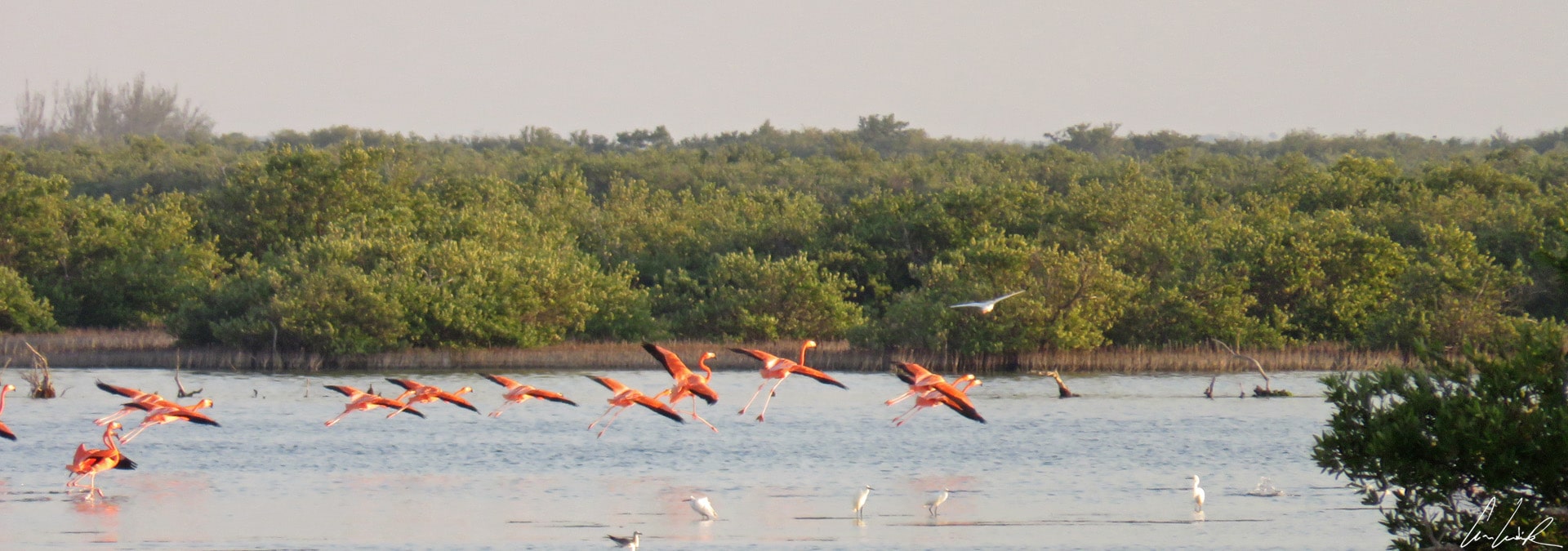
The Zapata Peninsula, a flock of flamingos
One of the most fantastic nature excursions is undoubtedly Las Salinas Wildlife Sanctuary, which stretches over 135 square miles, but is just a drop in the bucket on the immense park covering 1,641 square miles. Today we have a French-speaking guide, Mario, who is a passionate connoisseur of the region. He travels the area with tourists every day to uncover its beauties. The adventure begins in a dense forest where we silently discover the secrets of the plants, animals, and birds. Here, a Black Hawk rests on a tree branch… Oh, my God, hopefully, we are not going to witness its fall… Ridley Scott would be able to make a film with the title Black Hawk Down ! Gradually the forest fades, and large lagoons unfold in front of us providing a habitat for many species of birds. We make a stop on the trail about 5 miles from the swamps and 7 miles from the Caribbean Sea as the crow flies. Just by standing still without making noise and without sudden gestures, we can observe the incessant movement of the various species: large Egrets are identified by their orange beaks and white juvenile Ibises easily recognizable by their grayish plumage. Bird-watching is good, but to be able to identify the birds is even better… “Super Mario’s” advice is to first note the bird’s colors and spots on its wings, head, and rump, and then to evaluate its size… Easy, no ? Let’s try… over there… I have it on the tip of the tongue… but yes, of course… It is a Tricolored Heron walking nonchalantly in the lagoon while its cousin, the more timid Green Heron tries to hide in the shrubs… Now it is your turn… stopwatch in hand… I am a strange wading bird with long legs between 28 and 34 inches high and an elongated spatulate bill, wide and rounded at the end? Who am I? Come on, try a little harder… I am sure you have the answer on the tip of the beak… Yes, bravo, you have just discovered the pot of roses, a Roseate Spoonbill. Unlike herons, the spoonbill flies with its neck and legs completely outstretched (the proof in the picture).
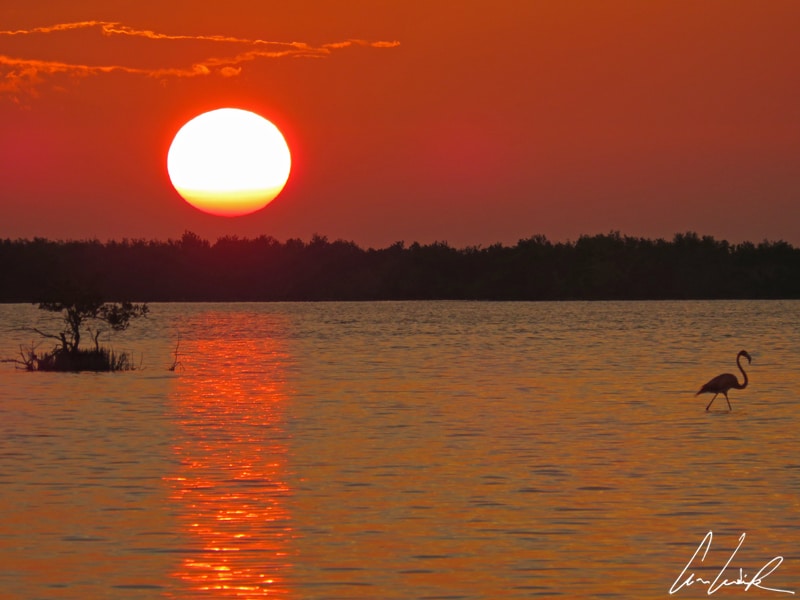
The Zapata Peninsula, sunset
We are at the Salinas de Brito, a magical place where “piafs”, a Parisian argot word for sparrow taken over by Edith Piaf as her stage name, accompany us on our discovery of la vie en rose. On our right is a flock of flamingos while on our left other flamingos criss-cross the lagoons in search of shrimp to maintain their bright pink color. The young flamingos have uncolored plumage: the legs are dark, the neck and under the body dirty white, and the upper body marked with brown. The color pink appears and attains its maximum intensity between their fourth and the seventh years. But the ambient brightness declines very quickly… sunset is approaching, and the park takes on pink and purple hues to the point that the landscape seems almost unreal ! The silhouettes of a pelican and then a duo of flamingos stand out against this orange-colored sky… The sky seems to burst with a thousand lights, and the silhouettes of trees and birds stand out In the foreground like Chinese shadows against the sunset ! Such a spectacle !
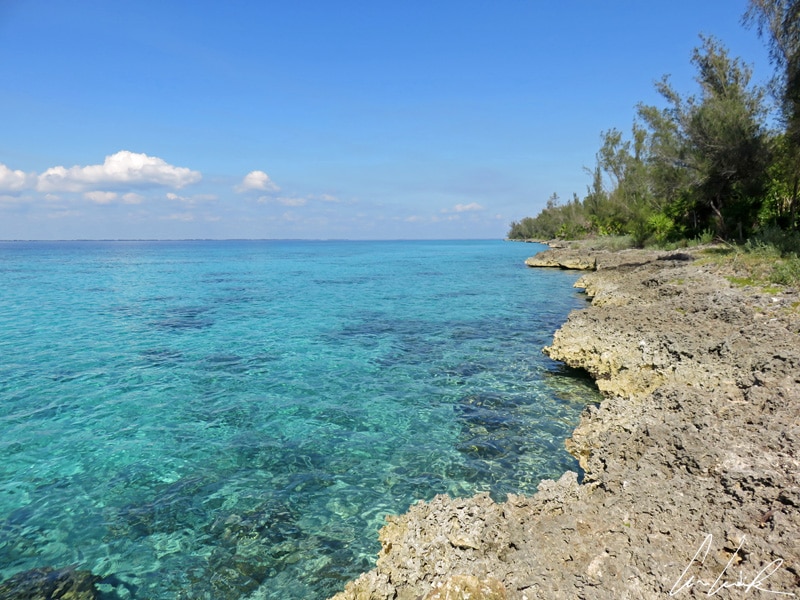
Cueva de los Peces
“Let the Sunshine / Let The Sunshine in / The Sunshine in…” The following morning we are in the front row to admire the sunrise near the small fishing port of Playa Larga. The Peninsula of Zapata remained off the beaten path for travelers for a long time, and Playa Larga continued to be a fishing village until 2010. Today, fishing has become the second economic activity of the peninsula behind… tourism! But it is time to explore the famous Bahía de Cochinos or Bay of Pigs in English. Contrary to what one might think the Bay of Cochinos owes its name, not to the presence of pigs, but to the Pez-cochinos (fish-pig) living in the Bay. It is a quiet coastline and one of the best diving and snorkeling paradises. There are plenty of opportunities to get into the water between Playa Larga and Playa Girón, situated about twenty miles further South. About half way between Playa Larga and Playa Girón is an environment of limestone rocks and luxuriant vegetation, the Cueva de los Peces, and here a cenote (natural swimming pool) measuring 33 feet wide, 82 feet long and 230 feet deep is a natural wonder. This cenote, a tectonic fault flooded with salt water, is connected to the ocean by subterranean caves… Let’s plunge into the water with mask and snorkel to appreciate its beauty and to observe multi-colored fish, blue and white parrots and much more. This vast bottomless well offers an endless choice of fascinating experiences. We could spend hours here in the company of some indigenous people: a lovely Curly-Tailed Lizard (Leiocephalus carinatus), a Blue-Headed Dove, endemic to Cuba, and a West Indian Woodpecker… The area offers us a spectacle both marine and aviary. The show continues only a few miles away with the inevitable Caleta Buena: a magnificent inland lagoon protected by eroding limestone rocks, sharp as razors. The lagoons offer us a gorgeous palette of colors and tropical fish of different shapes in sometimes surprising colors and designs, making their way into this “postcard” decor.

Caleta Buena, “postcard” decor
But the Bahía de Cochinos is also a historic place, the site one of the most disturbing episodes of the Cold War. In April 1961, a group of Cuban mercenaries trained and organized by the CIA landed here in an attempt to overthrow the new regime of Fidel Castro… They did not expect that Russian T-34 tanks and fighter jets would welcome them ! The sign at the entrance to the village of Playa Girón sets the tone “Aqui se libro a combate decisivo para la VICTORIA“. The Museo Girón commemorates the “heroic” battle (David against Goliath…) At the entrance to the village stands one of the famous Russian T-34 tanks (also used during World War II). But we must admit that, even if this Cuban victory is still celebrated, the Bay of Pigs attracts more tourists for its coast than for its military history… But as William Faulkner wrote, “The past is never dead; It’s not even past”.


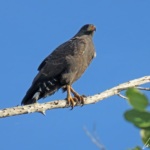
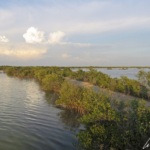
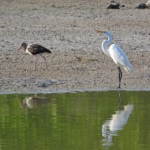

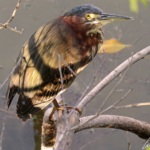
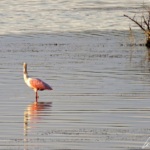
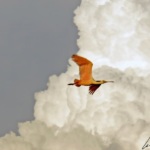




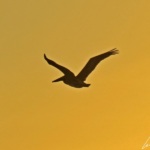


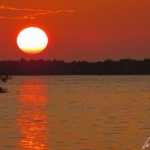
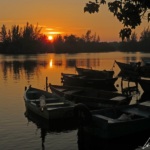

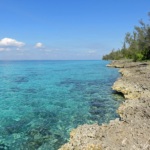
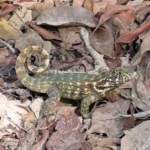

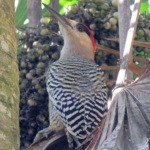
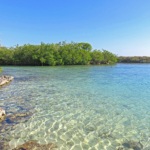
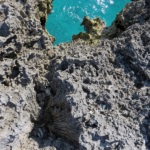
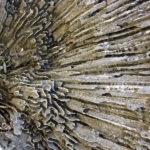
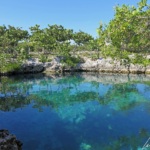

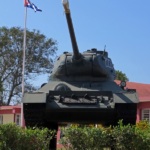


Great post, thank you for sharing! I absolutely loved your photos.
Thank you :-). Las Salinas Wildlife Sanctuary is a fantastic place to take beautiful pictures !
Love all the photos of wildlife – something I seriously miss seeing regularly in London (except the famous London foxes!). Cuba is on my bucket list, so I enjoyed your post! Love the blog name too 🙂
Thank you 🙂 Las Salinas Wildlife Sanctuary is undoubtedly one of the most fantastic nature excursion we did in Cuba. Being there at sunset was just magic !
Wow that blue water looks absolutely amazing!!!!! Ive never heard of this place, really gorgeous!
Cueva de los Peces and Caleta Buena really offer a “postcard” decor !
Absolutely stunning. Love the eye on that woodpecker! And the green heron is gorgeous! I think the curly tailed lizard is my favourite though – he looks so fancy.
Yet it is attractive, in its own quiet way 🙂 It’s common name is derived from the lizard’s habit of curling the tip of its tail upwards when it comes to a stop.
Cool, very interesting post! Beautiful photos and I didn’t know that flamingos didn’t turn pink till their 4th year, thanks for sharing!
It was a great learning for us too… Before visiting the Salinas de Brito, I didn’t know that the young flamingos have uncoloured plumage: the legs are dark, the neck and under the body dirty white, and the upper body marked with brown.
WOW, when is the best time to visit?
The dry season runs roughly from November to April. This is probably the best time to visit Cuba to avoid the rains and occasional hurricanes.
I have always wanted to do a tour with an experienced guide in a bird watching reserve! In my experience, some of the Cuban guides were really, really good (actually, the French speaking lady in the coffee plantation and overall Las Terrazas was the best!).
Swimming in cenote was one of my Cuban highlights, pleasantly cool to relax in a really hot day 🙂 I did not get to go to this park though, so something to be revisited.
When feasible I like having a travel local guide, one of those telling real and passionate stories and anecdotes of that place ! Mario was a really good guide, such a passionate connoisseur of the Ciénaga de Zapata reserve 🙂
Wow, these photos are spectacular! Flamingos are so beautiful! It’s one of my travel goals to see them in the wild. Thank you so much for sharing. Your trip looks like it was amazing.
Indeed, these flamingos with the bright pink colour are really beautiful ! Hope you can see some of them soon 🙂
This is great! I love all the pictures of the wildlife 🙂
Thank you 🙂 The Ciénaga de Zapata reserve has a rich ecosystem and is a dream for ornithologists of all kinds !
Great post on a part of Cuba that I didn’t know about! Love that there is so much wildlife, though I would go just for the flamingos. LOVE flamingos!
Las Salinas Wildlife Sanctuary is undoubtedly one of the most fantastic nature excursions we did in Cuba ! This park is a dream for ornithologists of all kind 🙂
Looks amazing place, all with its fauna and flora.. It looks so far away to me though. I wonder how did you decide to go to Zapata National Park?
I enjoy Mother Nature, more the country side over the city, the landscape to take your breath away rather than the skyscraper. So when we prepare the trip we always try to include National Parks and nature areas.
That’s such off beaten path to travel. The birds at the national park are so beautiful. Hope to visit one day soon.
Cuba is full of so many amazing places to see, great people to meet, delicious food to eat etc. so see it by yourself at least once !
Your photos are stunning!! This is a side of Cuba I really havent seen and it makes me want to go even more!
Thank you 🙂 . You have to put the Zapata Peninsula on your list for your next trip to Cuba !
This looks fantastic, I am a total bird geek so would love this place. Awesome photos too 🙂
Salinas de Brito is really a magical place where you can observe the incessant movement of the various birds species !
It’s so refreshing to see a post about Cuba that focuses on the wildlife and environment. Your photos are lovely! Matanzas has been on my travel wishlist for some time, so your post is certainly inciting a case of wanderlust!
I am in constant awe of the beauty of life… I enjoy Mother Nature, more the country side over the city. Whatever the country I visit, I spend time in nature because it is one of the most powerful ways of giving yourself a mental reboot and reinstating a sense of ease and wonder 🙂
I think I fell in love with every single one of your photos! Amazing 🙂
Thank you :-). Taking pictures of wildlife and environment is so refreshing !